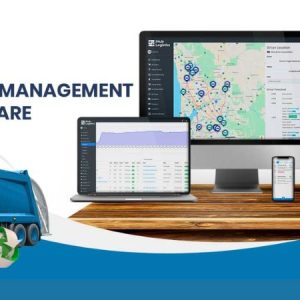The connection between project management and time tracking (or project time management) for some people doesn’t need any explanation. Whenever they think “project”, they see “time” or “time tracking”. This article is different.
From “Why should I do it?” to “OK, how do I start?” this time tracking guide will show you the benefits of this process and the right way to do it. The latter part is especially important, since time tracking, when not implemented correctly, can leave your employees overwhelmed and actually not even slightly more productive.
What will you get with this article:
- How to track project progress and project resources
- Names of the companies that use project management time tracking tools to track projects time (at the bottom)
- The role and importance of project and employee time tracking software in a process of project planning
The Whys
Over $18,000 is lost on average every year by web and software development teams when they don’t use time tracking — that alone makes a pretty convincing case. Additionally, all people involved in the process of software development can actually benefit from time tracking:
CEO and finances
Time tracking means they have more control over the efficiency of their teams, which in turn helps estimate the burn rate and, consequently, make strategic decisions as to the undertaken projects.
Developers
Many may focus on the productivity aspect when asked about the rationale behind IT time tracking. After all, the ticking of the clock forces most of us to focus on the task at hand. However, the key reason to time-track is to foster development.
Keeping track of the pace of fulfilling tasks helps to point out if any of their skills require some extra work; consequently, it makes it easier to address any skill shortcomings before they become a real issue and seriously impact the team’s velocity. Additionally, time-tracking allows developers to compare their estimations with the actual work time. As a result, they become better at evaluating their workload.
Quality Assurance
Time-tracking the code review helps to establish the inspection rate and make future projections more accurate.
Clients
Time-tracking and tracking project progress proves to the client that they’re getting their money’s worth. When a project is being time-tracked, clients can see for themselves how much time it takes to reach the designated project milestones — this way, they know exactly what they are being charged for.
Project Managers
Finally, you, Project and Resource Managers: using time trackers for projects allows you to keep track of the team’s performance and makes it easier to estimate future iterations, as it provides you with historical data on their past performance.
Not all working hours are made equal — or so it might seem. While the value of billable hours (they cover actual tasks, meetings, and calls) is fairly self-explanatory, it’s much harder to account for unbillable hours — and sometimes they may constitute a substantial part of the job.
For instance, should you be billing the client for the hours your developers spent learning a new technology required for the project?
On one hand, it was essential for that project; on the other, chances are it’s an investment that’ll be of use in the future, so charging anyone 100% for having a developer acquire new skills could be seen as simply unfair.
Yet another case is when your team has to investigate a completely new technology before diving into a project. For example, your team might have to investigate an innovative technological combo which is a make or break of the project: there’s no telling if this combo will work, so the client has to decide whether they are willing to pursue an idea that may turn out to be a total flop.
You should always discuss such issues with the client beforehand, for the sake of both the timeline and the costs. If your company uses time tracking, they can monitor the billable/unbillable hours ratio and come up with an average rate for the services.
The Hows
There is no getting around the fact that time tracking itself takes time and effort to both onboard new users and make sure they actually use the tracking software. However, as over 38% of potential billable revenue is lost because of untracked time spent on email and meetings and delays in filling in timesheets, this game is definitely worth the candle. Following these 6 rules while introducing the IT team to time tracking, not only will they ease the implementation but also foster a more effective process:
1. Choose the best employee time tracking software
Make sure that the time tracker you’re using addresses the needs of your company. The most obvious factors to consider are company size and the already used tools. If the company’s growing rapidly, you need a tool that can scale along with it. Similarly, if certain tools are already implemented, then use software that can become an integral part of the system.
Alternatively, think if it makes sense for you to choose employee time tracking software that can be used for other employee-related purposes: resource scheduling or availability / leave management (at Apptension, the software house I work at, we came up with an app to take care of all of the project resource management-oriented tasks, including time tracking).
Bottom line: make sure it is properly utilized and doesn’t become yet another piece of “shelfware”. If you need an argument against software waste, consider that: more than 4 in 5 short- and medium-sized companies in the UK don’t use the software they pay for, with a total of over £5.7 billion spent in the course of the 4-year study.
2. Always explain the whys
Don’t just gather your team members in a room one day and say, “From now on, we’ll be using this IT time tracking software to see how your work’s going. Click here, now click there, perfect, thanks, the meeting’s over” — that is, unless you want to bump into a group of gossipers every time you go to the kitchen. People want to be treated fairly: if you introduce some changes, explain the rationale behind them. (Otherwise, they’ll just come up with one on their own, and chances are you won’t like their version.)
3. Focus on the process, not the product
When explaining why you want to track the time spent on given tasks by your team members, focus on self-evaluation and constant development rather than on numbers. After all, that should be the main reason behind time tracking: becoming better at their job. If you foster a culture of learning, then improved efficiency will come in as a hefty side bonus.
4. Keep track of how people use their trackers
If you’re a project manager, you should have an insight into your developers’ trackers. Accounting for every five minutes of the day is insane, but if someone’s continually leaving their tracker running on one task while having already moved on to another or keeps a few trackers ticking away simultaneously, you definitely want to talk to this person.
5. Remind people to track their time (a lot)
Time tracking is a habit, and habits are not made easily; initially, you’ll have to remind people to use the tracker constantly. Be patient and understanding: no habit can be built in a day. If your developers haven’t tracked time before, it’ll take weeks or months to get used to it . It’s going to be worth it in the long run, though.
6. Use the project data
Time tracking provides you with data concerning the performance of your teams and the dynamics between different members; hopefully, you can use it to improve everyone’s performance. A body of historical data should answer one or more of the following issues:
Skill shortcomings. Is there any necessary skill that a particular team member lacks? Does it slow down their performance or hinder the completion of the task? Can you provide them with the time and resources to acquire this skill?
Team efficiency. How does your estimated velocity for a given team compare with their actual performance? If you always estimate user stories using i.e. story points, can you calculate your team’s velocity?
Team dynamics. Does a particular member configuration work well for a particular project? Is anyone making the team lag, or is the workflow smooth?
Conclusions
There you have it: a project management time-tracking guide that should get you on the right track.
Remember that time tracking can bring skill growth and efficiency boost to the table, to name just a few. Although starting to time track may be a bumpy ride, it turns much easier if you focus on explaining the rationale behind the implementation and continuously help team members get used to the new tool.
Beware of shelfware —remember that the tool should have been built with a company like yours in mind. Maybe is worth taking into account dedicated trackers, such as agency time tracking software, marketing resource management software, or for other industries.




